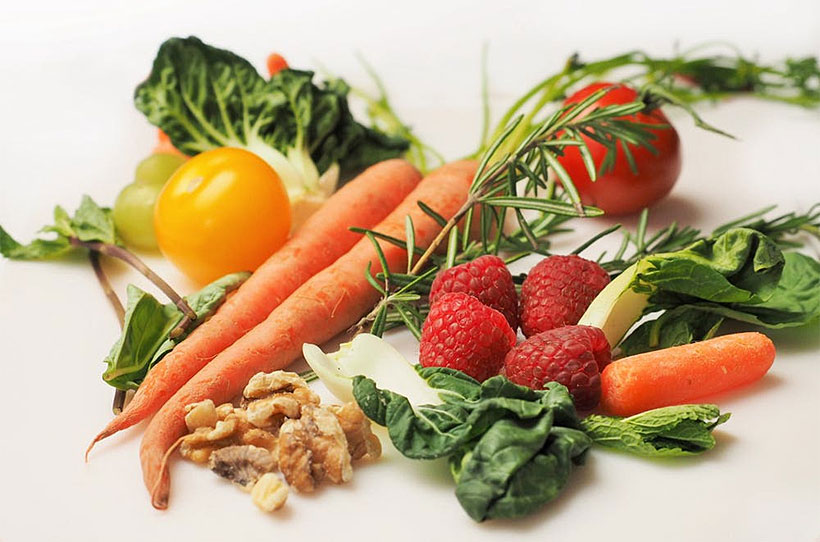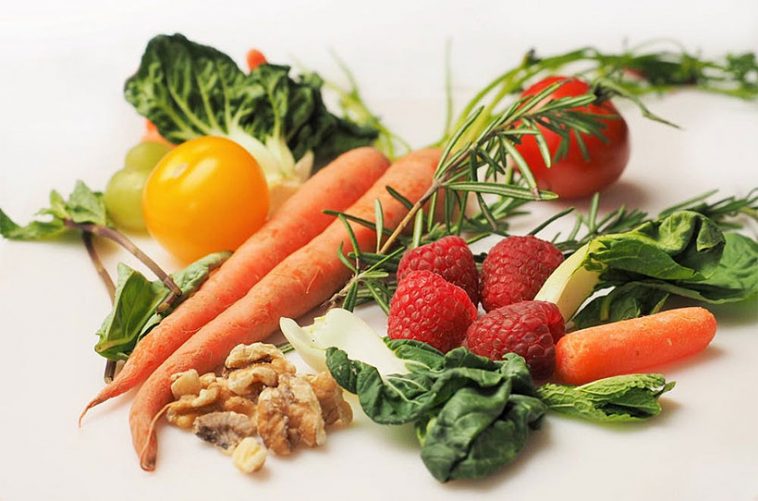- Like
- SHARE
- Digg
- Del
- Tumblr
- VKontakte
- Flattr
- Buffer
- Love This
- Save
- Odnoklassniki
- Meneame
- Blogger
- Amazon
- Yahoo Mail
- Gmail
- AOL
- Newsvine
- HackerNews
- Evernote
- MySpace
- Mail.ru
- Viadeo
- Line
- Comments
- Yummly
- SMS
- Viber
- Telegram
- JOIN
- Skype
- Facebook Messenger
- Kakao
- LiveJournal
- Yammer
- Edgar
- Fintel
- Mix
- Instapaper
- Copy Link
Introduction

Eating gluten-free isn’t just another buzz word in a long line of popular health trends.
When you take a closer look at what gluten is, how gluten sensitivity affects the body, and the benefits of making the switch, you’ll realize it’s not a trend at all, but actually a healthy lifestyle choice.
In this beginner’s guide to eating gluten-free, we’ll explain how eliminating gluten can actually be good for your health and how you can live well without it.
What is Gluten?
The first step in deciding whether eating gluten-free is right for you is to understand what gluten is. It’s a protein that occurs naturally in certain grains. When it’s mixed with water, gluten forms a network of cross-linked proteins that give the elastic qualities to dough and allows it to rise during baking.
In fact, the word “gluten” actually comes from its glue-like consistency. When it enters the digestive system, our immune system can mistake it for a foreign invader, like a virus or bacteria. In people who have celiac disease, which is an extremely severe type of gluten sensitivity, this leads to a full-blown attack on the gluten proteins with an enzyme in the cells of the digestive system.
When this reaction takes place, the intestinal wall is damaged, causing digestive problems and nutrient deficiencies. For people with gluten sensitivity, a similar reaction occurs, but on a milder scale that varies from person to person.
Foods That Contain Gluten
Gluten is found in many commonly used grains and flours:
- Wheat/wheat berries
- Barley
- Semolina
- Couscous
- Rye
- Durham flour
- Semolina
- Farina
- Some oats
- Bulger
- Fu
- Graham flour
- Malt
- Spelt
- Triticale
Some people are eating gluten without even realizing it. Gluten can be hidden in soy sauce and other soy products, imitation seafood, marinades, processed meats, soups, French fries, condiments, beer, supplements, and many other common foods.
It’s also in foods that contain grains like pasta, bread, pastries, crackers, stuffing, wheat tortillas, and more. If it lists wheat or any of the other grains mentioned above, it contains gluten.
Symptoms of Gluten Sensitivity
Gluten is a leading cause of inflammation in the body, so you don’t need to have celiac disease to experience issues from eating gluten. Here are some of the most common symptoms people experience when they are sensitive to gluten.
If you experience any of these symptoms regularly, you might get significant relief by eating a gluten-free diet.
- Abdominal Bloating: This is one of the most common symptoms of gluten sensitivity, and it’s one of the most uncomfortable. The sensation feels a bit like a balloon is gradually inflating in your stomach.
- Abdominal Cramping: As if the bloating isn’t bad enough, abdominal cramping and pain are also common symptoms. However, cramping can be caused by a variety of health issues, so be sure to rule them out with your doctor before you switch to a gluten-free diet.
- Headaches: So many people experience headaches on a daily basis and think it’s just a part of life they have to deal with. While the headaches could be caused by things like stress, too much screen time, or overindulging in alcohol or caffeine, they’re also a very common sign of gluten sensitivity.
- Elimination Problems: If there’s one thing that can really ruin your day, it’s having to run to the bathroom constantly with diarrhea or constipation issues. Nobody’s happy when they’re having tummy troubles, and it can have a significant impact on day to day life. For many people, stomach problems like diarrhea and constipation disappear when they go gluten-free.
- Depression:It only makes sense that people who are suffering from headaches, tummy troubles, and general poor health are more likely to be depressed. It’s tough to feel happy when you feel crappy all the time from gluten sensitivity issues. Not only that, but gluten can also have a direct impact on the healthy bacteria in your gut. Gut health and mood go hand in hand.
- Skin Issues:Everyone experiences food sensitivities a little differently. For some people, gluten sensitivity shows up as acne, eczema, psoriasis, and other skin issues.
The best way to know for sure if you will feel better on a gluten-free diet is to give it a try. It takes about 3 or 4 months to purge gluten from the bottom. Try eliminating gluten for at least that long and see how you feel and if you experience symptoms when you reintroduce it later.
Benefits of Eating Gluten-Free
Now that you know what the most common signs of gluten sensitivity are, let’s take a look at the potential health benefits of eating a gluten-free diet.
- Better Digestion: It might be hard to believe that removing gluten from your diet could improve digestive issues you’ve dealt with your whole life, but it’s true. For people with gluten sensitivity, removing gluten from the diet allows the lining of the gut to heal and repair itself. Many people report a drastic improvement in as little as a week.
- Weight Loss: When you go gluten-free, you get rid of things like pasta, bread, and crackers, which could contribute to weight loss. However, if you simply replace these carb-loaded options with either carb free foods or gluten-free carbs, you probably won’t see much change in this area.
- More Energy: Most people who make the switch to gluten-free eating see an overall improvement in their energy levels, mainly because their blood sugar levels remain steadier without gluten. If you feel like you’re in a food coma every time you eat a meal, that will probably go away when you stop eating gluten.
- Less Bloating: Going gluten-free will significantly lesson the bloated feeling you get after meals. No more popping the top button on your jeans after you eat!
- Improved Nutrient Absorption: As your gut health improves from eliminating gluten, nutrients can be better absorbed into your bloodstream to nourish your body.
- Relief for IBS: This ties in with gut health improvement, but for people who suffer from IBS, this is a really big deal. Here’s a study that shows just how drastically the symptoms of IBS can be improved by switching to a gluten-free diet.
- Less Brain Fog: Many people who experience brain fog and a lack of focus notice that the issue goes away when they make the switch to gluten-free. Improved mental alertness can have a significant impact on our everyday life.
Basics of Eating a Gluten-Free Diet
Gluten-Free Grains
Making the switch to a gluten-free diet doesn’t mean that you have to give up grains forever. There are many gluten-free grain alternatives that are absolutely delicious. There are tons of ideas online for how to replace gluten-containing flours for gluten-free alternatives in all your favorite recipes.
- Corn
- Sorghum
- Amaranth
- Buckwheat
- Wild rice
- White/brown rice
- Quinoa
- Certified gluten-free oats
- Teff
- Millet
There are also a variety of grain-free flowers on the market, including potato flour, coconut flour, and almond flour.
Other Naturally Gluten Foods
Of course, you can feel free to indulge in your favorite naturally gluten-free foods, too. These include vegetables, fruits, meats, seafood, poultry, nuts, seeds, and plain dairy products. Avoid processed or flavored foods that could have hidden gluten-containing ingredients.
Be Careful of Cross Contamination
You must be very careful about cross-contamination to be successful in eliminating gluten from your diet. Read labels to make sure food isn’t prepared in a factory where gluten-containing foods are also prepared. When you eat out, be careful about foods that are prepared in the same kitchen as foods that contain gluten.
Watch Out for Hidden Sources of Gluten
We’ve already touched on this above, but it’s worth diving into in greater detail. For example, malt is a common ingredient that contains gluten, and it’s found in beer, soy sauce, and things like marinades, flavored vinegars, and beef jerky. Most communion wafers contain gluten.
Check the labels on your supplements and OTC meds to make sure they don’t contain gluten. It can be hidden in processed lunch meats, gravy mixes, canned soups, and more. Some herbal teas even contain gluten in the form of barley, so you have to be vigilant and read labels very carefully.
You Can Live Well on a Gluten-Free Diet
Yes, you can still have your favorite foods and treats on a gluten-free diet. You just have to do a little research to find the best alternatives. In fact, the shelves at your local grocery store are full of gluten-free breads, baked goods, beers, and condiments you can use instead.
If you don’t like to cook or don’t have time to worry about shopping for gluten-free groceries, there are good options for you, too. MBSF reviewed the top gluten-free meal delivery services that can keep you on the right track no matter how hectic your life gets. You probably won’t even notice that you’re eating gluten-free!
Conclusion
Eating gluten-free is one health trend that really can have an impact on your overall health. For many people just starting out on a gluten-free diet, it can be a bit overwhelming. After all, many foods that contain gluten are staples in the American diet.
The thought of eliminating them all may seem impossible, but if you follow the advice in this article, it doesn’t have to be. With a little planning and a lot of label reading, making the switch to a gluten-free diet can be fairly easy. There’s no reason to feel deprived, especially when you start to notice the dramatic improvements in your health!
About Shannon Clark
Shannon holds a degree in Exercise Science and is a certified personal trainer and fitness writer with over 10 years of industry experience.

